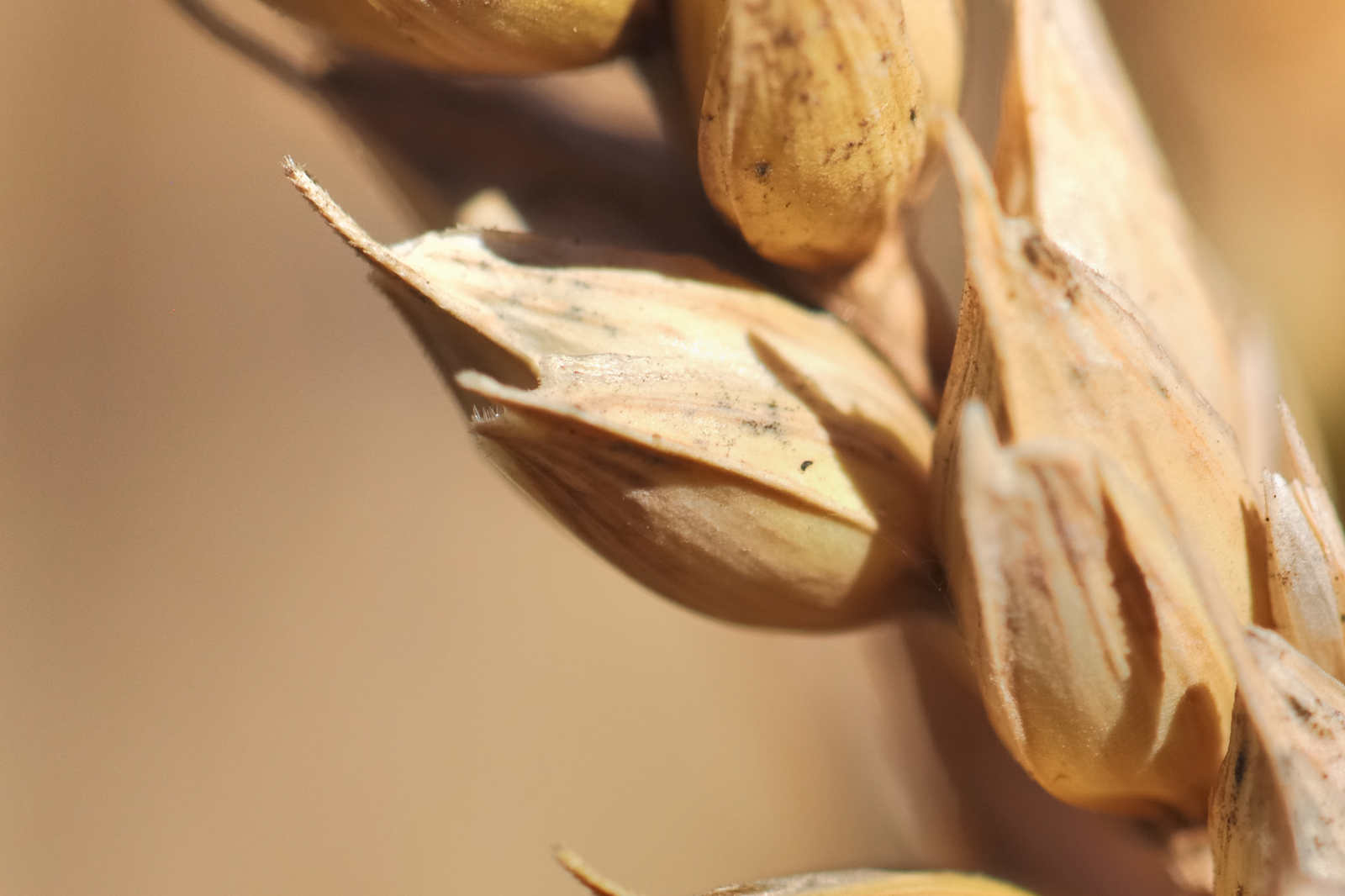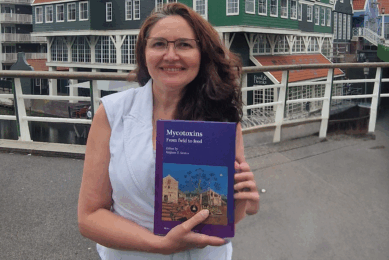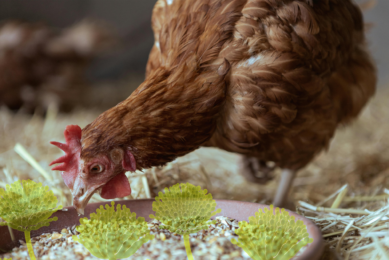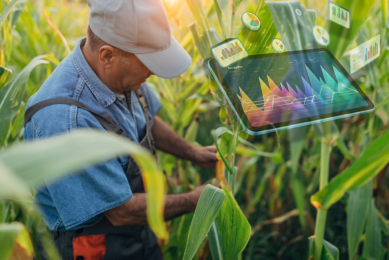Fusariotoxin occurrence in different feed materials

Animal feed, contaminated with fusariotoxins, can cause serious health problems for animals. This is also because more types of this toxin often occur at the same time in one sample. But what is the correlation between the different fusariotoxins when they appear together?
The probability of having multi-contamination of mycotoxins in one raw material sample is very high, as shown in many studies. In the field, favourable conditions of development of one mould often permits the development of other mould species. In addition, one mould can produce different types of mycotoxins. The most frequent type of mould developing on plants in the field is Fusarium, responsible for Fusariosis. As for all fungi, Fusarium growth depends on moisture level, temperature, resistance of grain varieties and cultivation methods like crop rotation, no-till farming or the application of fungicides. The mould itself is not a high threat to the animal, but its toxins, produced under stressful conditions, are. Fusarium specifically produces fusariotoxins: trichothecenes (deoxynivalenol (DON) and T-2/HT-2 mainly), zearalenone (ZEA) and fumonisins (FUM). The different parameters affecting mould growth and mycotoxin production are responsible for the variable occurrence of fusariotoxins depending on the feed materials, as shown in several publications (SCOOP 2003; Eckard et al. 2011; De Boevre et al. 2013).
Correlation in occurrence
As part of its Myco’Screen offer, the French animal nutrition company Olmix has developed a partnership with a French public lab, Labocea. This lab performs contaminant analyses with liquid chromatography-mass spectrometry allowing detection of more than 45 mycotoxins per sample, including up to 24 fusariotoxins. Olmix and Labocea worked on a common project with a goal of better understanding the profile of mycotoxin contamination per type of raw material, through the exploitation of their common mycotoxin analysis database. The Olmix-Labocea database is composed of more than 5000 samples, collected worldwide from 2013 to 2016. The samples can be sorted by origin and type of feed material. This database shows that 70% of the feed materials tested have more than 5 mycotoxins co-occurring and also confirms that fusariotoxins are of major importance regarding their occurrence in feed materials, trichothecenes being the major family of fusariotoxins. More precisely, the goal of this study was to identify the correlation in the occurrence of fusariotoxins (Figure 1) in different contaminated feed materials through statistical analysis. The final objective is to be able to anticipate a situation where two fusariotoxins can occur together and determine the correlation between these two fusariotoxins.
Figure 1 – Studying the correlation between Fusariotoxins.

Experimental set up
In this study, feed samples with at least 1 fusariotoxin above limit of quantification (10 ppb) and with a minimum of 30 samples per type of feed material were selected. In order to avoid any geographical interaction, samples from 1 restricted area only (France) were considered. The final database used for this study was composed of:
256 samples of wheat,
111 samples of barley,
491 samples of corn silage,
232 samples of corn grain,
88 samples of corn humid,
58 samples of hay and
42 samples of grass silage.
2 different tests were performed in order to determine the correlation between the fusariotoxins. First a logistic regression was run in order to determine the threshold quantity of a mycotoxin to have the presence of another mycotoxin. This test permits us to understand in which situation 2 fusariotoxins co-occur.
In a second step, the coefficient of correlation (r) was calculated, in order to determine any quantitative link between 2 fusariotoxins.
Link between mycotoxin and derivatives
DON is the most occurring trichothecene worldwide. The major derivatives of DON are either formed by fungi (the acetylated derivatives: 3-acetyl deoxynivalenol (3ADON), 15-acetyl deoxynivalenol (15ADON), or bacteria (the de-epoxide derivatives of DON: DOM-1). In feed mills and specialised labs, DON is very often analysed with rapid tests that are not capable of measuring the quantity of the above mentioned derivatives. As a consequence, it is particularly interesting to better understand the link between DON and its derivatives and if possible to set up predictions of derivative levels based on the one of DON.
The present study shows that the threshold quantity of DON to have 15ADON contamination in the sample, is lower than 200 ppb for corn materials and barley, whereas it is above 800 ppb for wheat, meaning that 15ADON is significantly more frequent on corn and barley compared to wheat. Among corn materials, corn grain has the lowest DON threshold level to have 15ADON (80 ppb) and also obtained a high coefficient of correlation (r=0.86) between DON and 15ADON which allows a linear regression. This data suggests that when DON is detected in small quantities (<200ppb) in corn grain and barley, there is a high risk of having 15adon in the sample. on corn grain, the link between don and 15adon is strong enough to be able to set up a predictable equation of 15adon level based on the analysis of don level (>Figure 2).
Figure 2 – Threshold DON level to have 15ADON per type of samples.

Unlike 15ADON, the DON threshold level to have 3ADON is very high for all feed materials: from 400 ppb (barley) to more than 4,000 ppb (corn silage) and no important correlation could be measured. As a consequence, it’s not possible to predict 3ADON level based on DON level. The very low occurrence and mode of production of DOM-1 does not justify the implementation of the statistical tests. Nivalenol (NIV) is a type-B trichothecene but produced by different moulds than DON. The occurrence of this mycotoxin is important as it was detected in more than 50% of the database samples. In addition, NIV toxicity seems to be higher than DON (Alassane-Kpembi et al., 2015). As for 15ADON, there is no quick test existing for NIV, however it would be very interesting to be able to predict the level of contamination of this mycotoxin. The DON threshold level to have NIV in the sample is lower than 300 ppb for all materials, illustrating their high co-occurrence. However, it was not possible to set up any correlation between NIV and DON, probably due to the different origins of these mycotoxins.
Grass hay and silage
Regarding type-A trichothecenes, the threshold level of T-2/HT-2 to have its metabolites was either not significant or high regarding the low level of T-2/HT-2 toxins. No conclusion could be made. None of the statistical tests gave significant results for grass feed materials (hay and grass silage), meaning that we couldn’t establish any link between these types of fusariotoxins. In 2015, in a review, Gallo et al. described the wide range of mycotoxin contaminations of grass hay and silage. The variation in mycotoxin contamination of grass hay and silage, can be explained by the multiple types of plant species composing these feed materials and by the variable pre-harvest, and also post-harvest conditions. This wide range of contaminations may explain why we couldn’t establish any correlation between fusariotoxins for this type of sample. Interestingly, on the contrary to cereals, the contamination in ZEA is higher than in DON in grass feed materials. This is particularly important with regard to the high forage consumption of dairy cows and the acute impact of ZEA on reproduction performance (Santos et al., 2003).
Conclusion
This study highlights the frequent co-occurrence of fusariotoxins and demonstrates that they are sometimes correlated. Understanding the links between the occurrence of the different fusariotoxins helps to better evaluate the overall contamination of a sample even if only quick tests are used with a limited number of fusariotoxins tested. The present study provides tendencies to anticipate co-occurrence of fusariotoxins based on the level of DON for the major feed materials and even establish significant and quantified links between DON and 15ADON on corn grain. This approach provides helpful information for the evaluation of mycotoxin risk and its management depending on the type of feed material.











